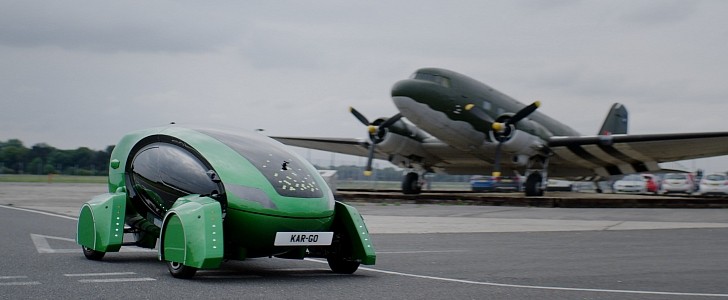As part of the Royal Air Force's Astra campaign, the Academy of Robotics and the Royal Air Force teamed up to launch a new trial deployment of self-driving vehicles on an airbase. This trail marks the first time the RAF has deployed autonomous vehicles on a UK airbase.
The Kar-go Delivery Bot from the technology institute will deliver tools, equipment, and supplies to places within RAF Brize Norton, near Oxford, as part of the trial. When RAF troops arrive to meet the driverless vehicle, a hatch is automatically opened, allowing them to receive their package.
The vehicles will carry out autonomous and semi-autonomous tasks while being monitored by a safety crew from a command unit. This remote command hub is a secure mobile unit that can monitor and control the vehicles' operation. If necessary, the crew can also operate the vehicle remotely from the center.
While only trained and authorized personnel are usually allowed to carry goods across an airfield, the deployment of secure, self-driving vehicles could provide important support to professional personnel, allowing them to focus on the primary responsibilities for which they were trained.
Because the vehicles are electric, they have the potential to reduce harmful emissions, helping the RAF meet its objectives of zero emissions by 2040. In addition, the trial marks the first step toward better understanding and investigating the possibility of using autonomous delivery vehicles to assist military personnel in their work.
Along with the big-ticket projects and programs, the Astra campaign aims to involve the entire Force of regulars, contractors, reserves, civilians in driving change by identifying and overcoming the barriers to progress by working smarter, innovating internally, and with Defense partners to create the right environment for ideas to flourish.
"Bringing self-driving technology onto a base offers many advantages. Ultimately, we could see fleets of autonomous vehicles with different autonomy levels delivering supplies, spares, tools, food and also providing airfield services such as aircraft fuelling, runway sweeping and snow and ice clearance," says Squadron Leader Tony Seston, RAF Engineer.
Following this initial trial, the RAF will carefully examine the findings and consider how they may be scaled up as part of their ongoing commitment to bringing innovation to the RAF.
The vehicles will carry out autonomous and semi-autonomous tasks while being monitored by a safety crew from a command unit. This remote command hub is a secure mobile unit that can monitor and control the vehicles' operation. If necessary, the crew can also operate the vehicle remotely from the center.
While only trained and authorized personnel are usually allowed to carry goods across an airfield, the deployment of secure, self-driving vehicles could provide important support to professional personnel, allowing them to focus on the primary responsibilities for which they were trained.
Because the vehicles are electric, they have the potential to reduce harmful emissions, helping the RAF meet its objectives of zero emissions by 2040. In addition, the trial marks the first step toward better understanding and investigating the possibility of using autonomous delivery vehicles to assist military personnel in their work.
Along with the big-ticket projects and programs, the Astra campaign aims to involve the entire Force of regulars, contractors, reserves, civilians in driving change by identifying and overcoming the barriers to progress by working smarter, innovating internally, and with Defense partners to create the right environment for ideas to flourish.
"Bringing self-driving technology onto a base offers many advantages. Ultimately, we could see fleets of autonomous vehicles with different autonomy levels delivering supplies, spares, tools, food and also providing airfield services such as aircraft fuelling, runway sweeping and snow and ice clearance," says Squadron Leader Tony Seston, RAF Engineer.
Following this initial trial, the RAF will carefully examine the findings and consider how they may be scaled up as part of their ongoing commitment to bringing innovation to the RAF.









